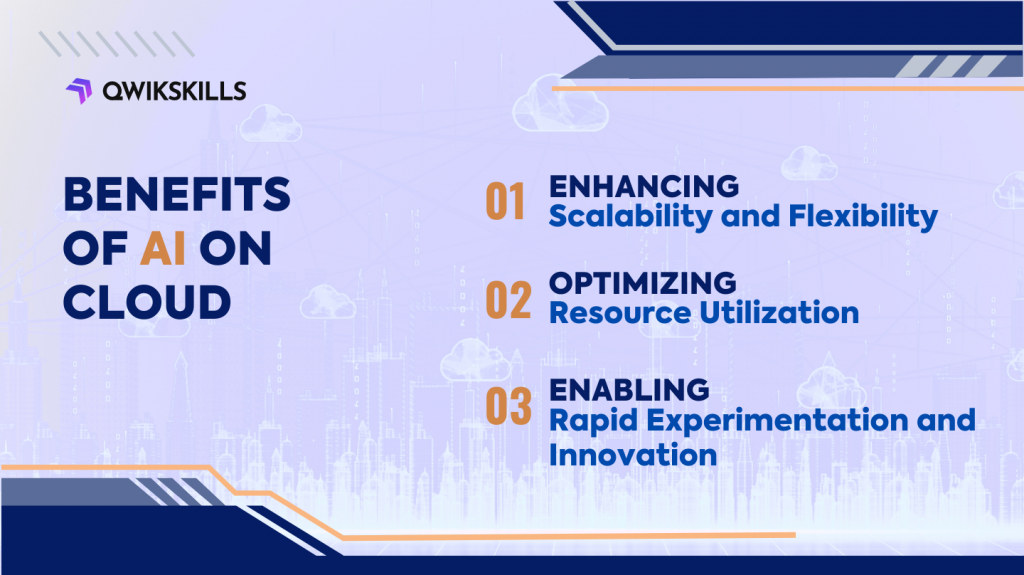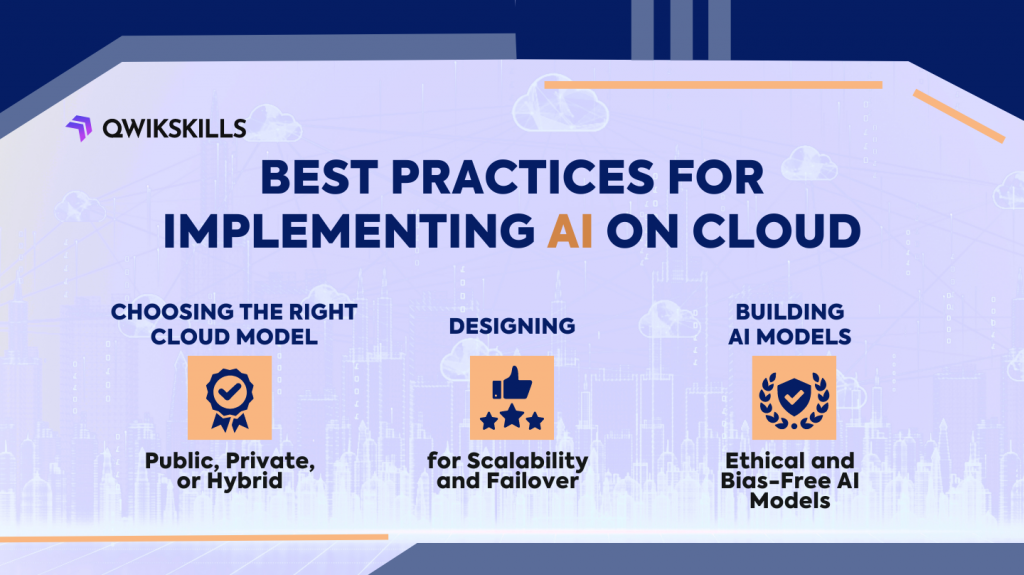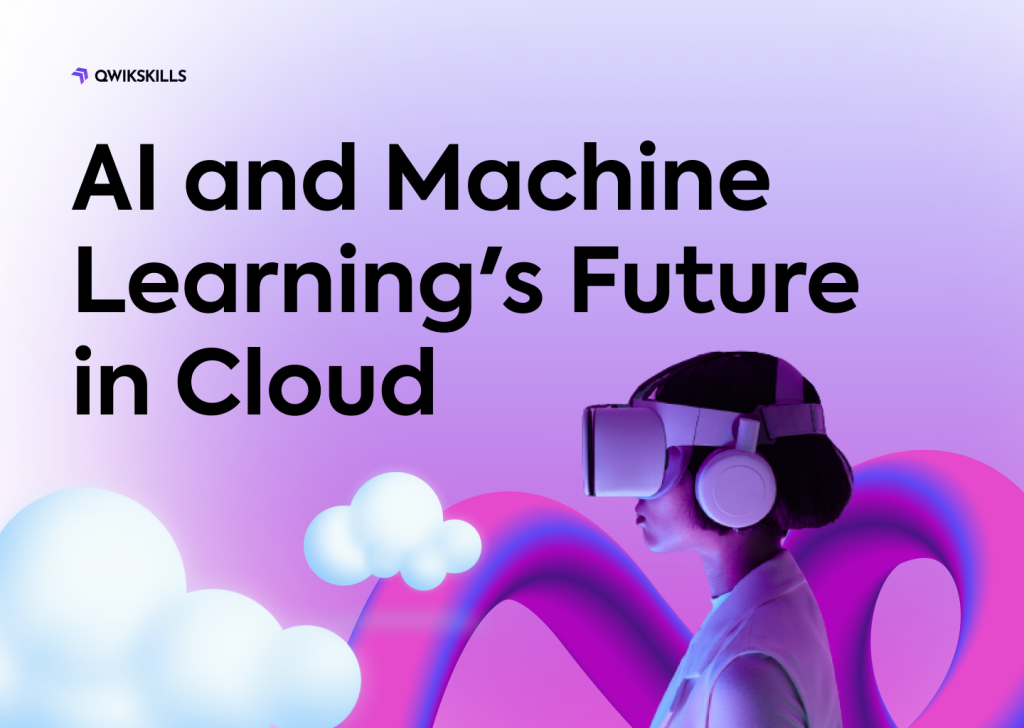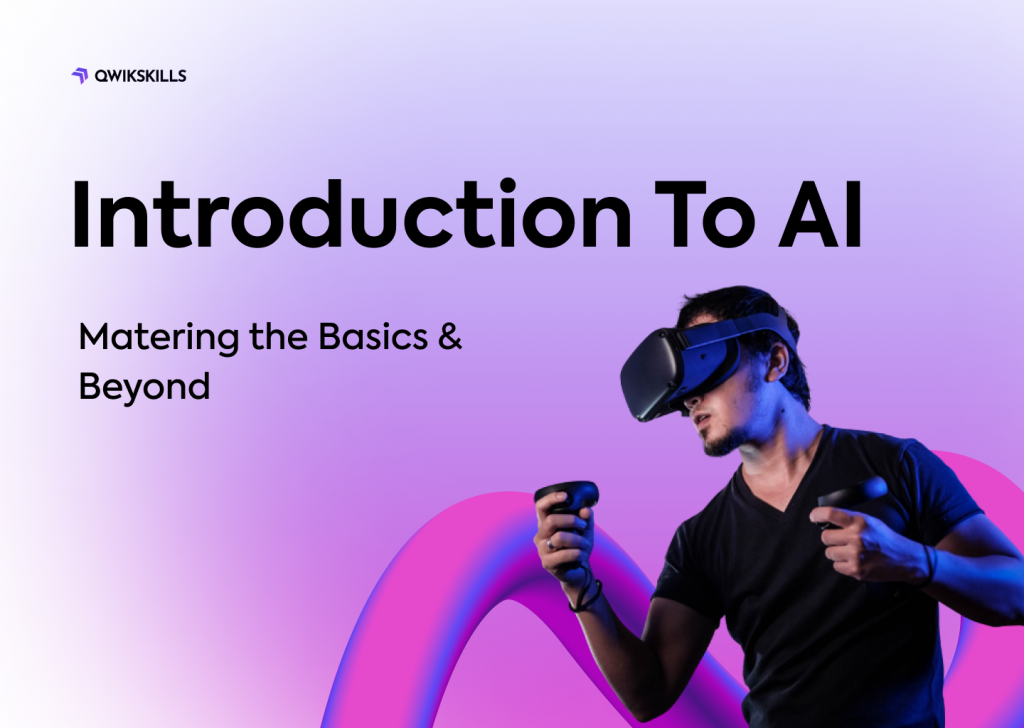In an era defined by technological leaps and bounds, the convergence of Artificial Intelligence (AI)and Cloud Computing has emerged as a groundbreaking force, propelling businesses into the realm of next-generation solutions. Imagine a world where AI’s prowess is seamlessly integrated with the limitless capabilities of the cloud – a world where industries are transformed, customer experiences are personalized, and innovation knows no bounds. Master the basics of AI with our comprehensive course, AI Essentials. Learn key concepts and applications.
Introduction
As we stand on the precipice of revolutionary change, the integration of Cloud Computing marks a turning point in how businesses harness data, intelligence, and computation power. The symbiotic relationship between AI and the cloud opens doors to unprecedented opportunities and possibilities that extend far beyond what was previously achievable.
Embracing the Convergence of AI and Cloud Computing
In the digital landscape, data is the new currency, and AI is the alchemical catalyst that transforms it into insights and foresight. Cloud computing, on the other hand, serves as the stage where this alchemy takes place. The convergence of AI and the cloud is like a duet between a virtuoso and an orchestra – each component enhances the other, creating a harmonious symphony of innovation.
Defining AI on Cloud: An Overview
At its core, AI on Cloud refers to the integration of AI capabilities with cloud infrastructure. This convergence facilitates the processing, analysis, and utilization of vast datasets using AI algorithms, thereby accelerating decision-making, automating processes, and enabling businesses to gain a competitive edge.
Benefits of AI on Cloud
Enhancing Scalability and Flexibility
Imagine having access to a virtually infinite resource pool. Cloud computing’s scalability and flexibility become even more potent when coupled with AI. As demands fluctuate, resources can be allocated and scaled in real-time, ensuring optimal performance without compromising on efficiency.
Optimizing Resource Utilization
AI’s resource-intensive tasks find a perfect home in the cloud. Complex computations, training of deep learning models, and predictive analytics can be executed with remarkable efficiency, maximizing resource utilization and minimizing waste.
Enabling Rapid Experimentation and Innovation
The cloud’s agility empowers businesses to experiment and innovate swiftly. With AI, experimentation cycles shorten, allowing for rapid testing of new AI models, algorithms, and ideas. This accelerates the pace of innovation and transforms how industries evolve.
Key Applications of AI on Cloud
Transforming Industries with Predictive Analytics
Predictive analytics, powered by AI on Cloud, is reshaping industries. Financial institutions predict market trends, healthcare providers anticipate disease outbreaks, and retailers optimize inventory management. The crystal ball of AI predicts outcomes, enabling proactive strategies.
Revolutionizing Customer Experience through Personalization
From e-commerce to streaming platforms, AI on Cloud tailors customer experiences. Algorithms analyze user behavior and preferences to offer personalized recommendations, enhancing engagement and customer satisfaction.
Empowering Healthcare with Diagnostics and Drug Discovery
AI on Cloud is revolutionizing healthcare. Diagnostics are more accurate, drug discovery is accelerated, and patient care is optimized. AI sifts through mountains of data to uncover insights that save lives.
Driving Smart Manufacturing and Supply Chain Optimization
In manufacturing, AI on Cloud optimizes processes. From predictive maintenance to supply chain optimization, AI fine-tunes operations, minimizes downtime, and maximizes efficiency.
Infrastructure and Tools for AI on Cloud
Cloud Providers Offering AI Capabilities
Leading cloud providers like Amazon Web Services (AWS), Microsoft Azure, and Google offer AI-specific services. These platforms provide the tools and infrastructure necessary to integrate AI seamlessly.
Machine Learning Frameworks and Libraries
Frameworks like TensorFlow and PyTorch, along with libraries like scikit-learn, empower developers to create and deploy AI models. These tools, combined with cloud resources, streamline the development process.
Data Storage and Management Solutions
The synergy between AI and Cloud extends to data managementplatforms offer scalable and secure data storage solutions that AI algorithms can access for analysis, training, and insights.
Challenges and Considerations
Data Security and Privacy in AI on Cloud
With great power comes great responsibility. While AI holds immense potential, data security and privacy concerns must be addressed. Encrypted communication, access controls, and compliance measures are essential safeguards.
Overcoming Latency and Performance Issues
Latency can hinder real-time AI applications. Cloud providers are working on edge computing solutions that reduce latency by processing data closer to its source, enabling faster decision-making.
Cost Optimization Strategies
The cloud is powerful but not free. Cost optimization strategies, such as auto-scaling and resource allocation monitoring, ensure businesses derive maximum value from AI investments.
Best Practices for Implementing AI on Cloud
Choosing the Right Cloud Model: Public, Private, or Hybrid
Choosing the right cloud model depends on factors like security, compliance, and data sensitivity. Public, private, and hybrid cloud models each have their strengths, catering to different business needs.
Designing for Scalability and Failover
Scalability and failover are paramount. AI applications should be designed to handle fluctuations in demand and ensure uninterrupted service, even in the face of unexpected challenges.
Building Ethical and Bias-Free AI Models
Ethics and biases are crucial considerations in AI development. Cloud-powered solutions must be designed to be fair, transparent, and unbiased, fostering trust and integrity.
Future Trends in AI on Cloud
Federated Learning and Edge Computing
Federated learning enables AI models to be trained across multiple devices while keeping data decentralized. This, coupled with edge computing, will usher in a new era of distributed, real-time AI applications.
Merging AI, IoT, and Cloud Technologies
The amalgamation of AI, Internet of Things (IoT), and technologies will result in a holistic ecosystem. Devices will gather data, AI will derive insights, and facilitate seamless integration.
Quantum Computing’s Implications
Quantum computing is on the horizon. Its immense processing power will elevate the capabilities, enabling quicker data analysis and more complex modeling in the cloud.
Case Studies
Netflix: Personalizing Content Recommendations
Netflix’s recommendation engine is a prime example, By analyzing user behavior, preferences, and viewing history, Netflix delivers personalized content suggestions, enhancing user engagement.
Johnson & Johnson: Advancing Drug Discovery
Johnson & Johnson leverages to accelerate drug discovery. AI algorithms analyze vast datasets to identify potential drug candidates, reducing research time and costs.
Siemens: Revolutionizing Manufacturing Processes
Siemens employs to optimize manufacturing. Predictive maintenance and real-time monitoring minimize downtime, maximize efficiency, and drive innovation in production.
Conclusion
In the realm of AI on Cloud, the possibilities are as boundless as the cloud itself. This convergence marks a new epoch where data, intelligence, and computation coalesce to create innovations that redefine industries, empower businesses, and enrich lives. As we embrace this transformative journey, we find ourselves at the threshold of a future where AI on Cloud is not just a concept, but a catalyst for change.
Ready to unlock the potential of AI? Dive into the future with QwikSkills. Explore comprehensive courses that demystify AI integration, Elevate your skills today and shape the innovations of tomorrow!






